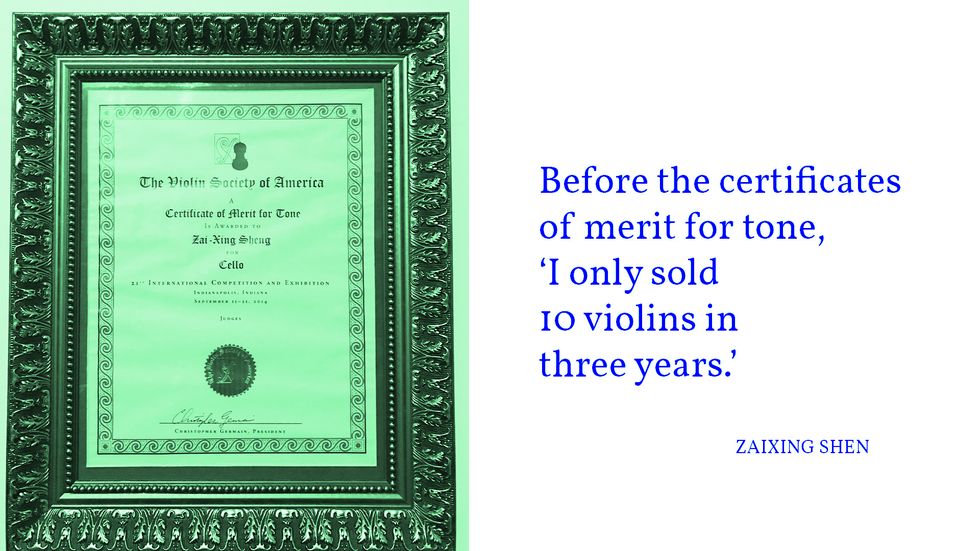My university semester was coming to an end and I was returning home. Before leaving, I went to Zaixing Sheng's house and asked what he wanted me to bring him back from China.
"Boy, please remember to bring bow hair to me and you need to make sure it is produced in Inner Mongolia. Thank you," said Zaixing, speaking in Mandarin. As I went to leave, he reminded me again.
I was curious. I only went back to China once a year. Why did he want me to bring this strange product to him, rather than the finest Chinese tea or a traditional handicraft such as a Chinese knot.
Bow hair made from an Inner Mongolian horse's tail is not easy to find. I spent hours combing the streets of my hometown Tai Yuan, capital of Shanxi province, before I finally located it in a traditional art shop.
When I returned to Sydney with the bow hair, Zaixing was very happy. He held it up with smile on his face and shouted: "This is my favourite gift." He then explained. "The violin bow hair produced in Inner Mongolia is the best material to make a classical violin. And there is nothing in Sydney that can exceed our Chinese violin bow hair for its durability."
In that moment I understood, Zaixing, at 70, was planning to begin work on a new violin.
A mountain needn't be high, it is famous so long as there is a deity on it.
****
BORN in Beijing in 1949, the year the People's Republic of China was founded, Zaixing studied violin as a child and grew to be a well-regarded, young professional musician.
"I remember that it was really hard to have a personal violin in that period of China. Most young musicians in the orchestra used public violins to perform. They could not afford a violin because their wages were only 36 yuan ($7.50) per month but, a violin was almost 800 yuan in 1980 in China," said Zaixing.
I can't imagine what it was like at that time, having grown up in modern-day China, but it is true. I have heard similar stories from my grandfather, that his life was very hard.
Keen to possess a violin of his own, Zaixing sought a solution. "I was thinking if I could make my own violin, I would be more free. I like music, and I have to take responsibility for my music and my violin."
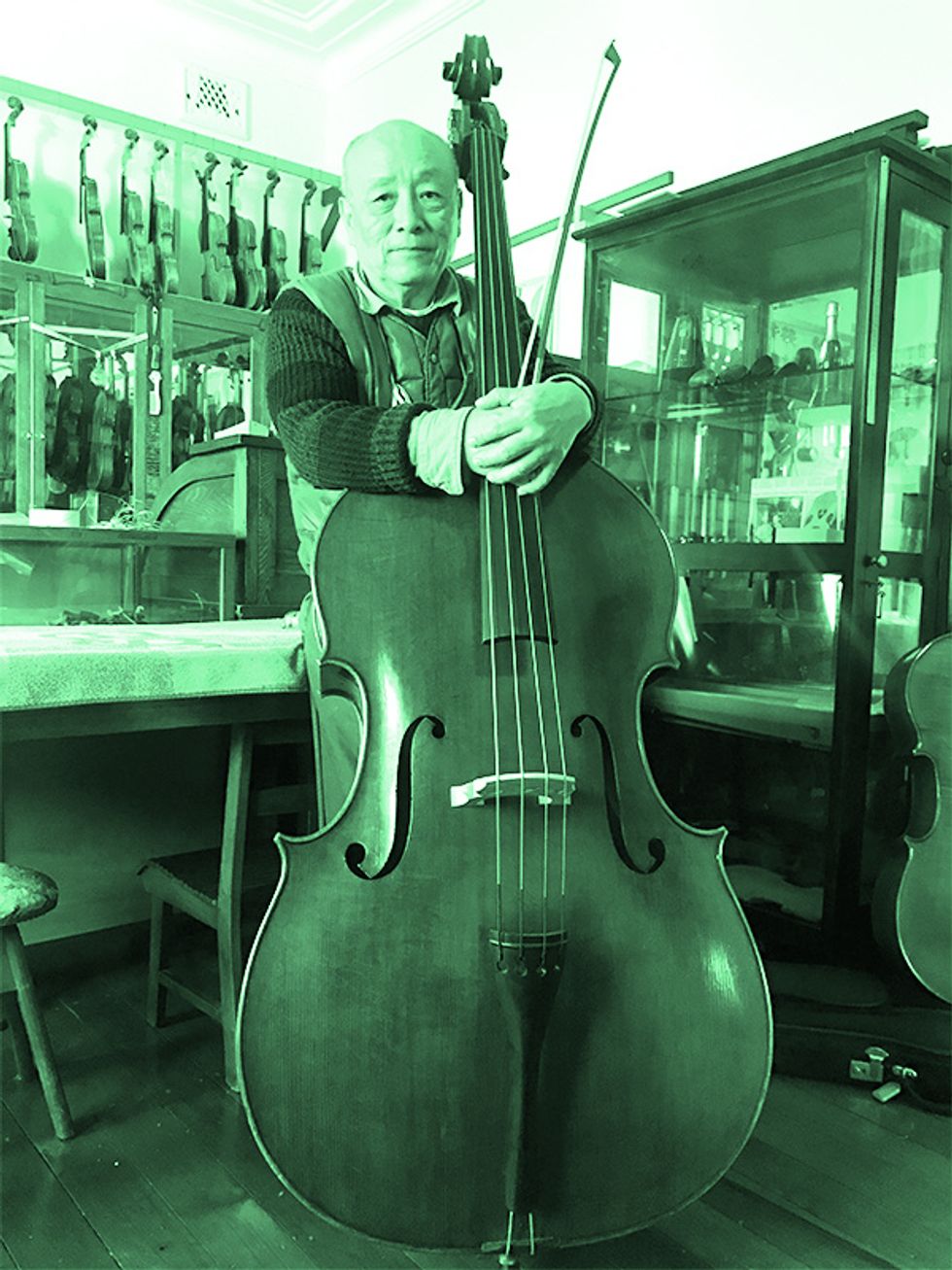
So, at 32, he sought out master luthier Hongxiang Dai, studying under him for five years, before he achieved his first professional breakthrough as a luthier, winning a West German competition in 1983.
Sipping his Chinese Kung-fu tea, Zaixing recalled: "After that, I found I have special abilities in violin making - many people like my handmade violins. So, I became rich."
He proudly tells me how students at the highly-regarded Wuhan Conservatory of Music, Hubei province, used his violins to study and perform and he was also responsible for their repair and maintenance in the early 1980s. "To be honest, when my violins became more popular and I became rich at that time, my life was changed," said Zaixing, without elaborating.
Instead, he stopped and turned to boil the water. I looked around and noticed two older wooden chairs, at odds with the other plastic chairs in the living room. "I picked up these two chairs when I took a walk [in Kingsford], and I repaired them to make them more stable," he explained.
He brings a pot of new tea and slowly sits down. "Although I am rich now, I always have a former habit to collect old objects. You may think this is a common custom for Chinese elderly people," he whispered, squinting his eyes, "but it is a part of a luthier's interest."
****
EACH violin is different. Zaixing revealed not every violin is suitable for every performer and his own experience as a performer makes him a better luthier.
"When I am performing, I can find those components which need to be fixed or repaired. Then, I will focus on my own professional performance experience and rigorous practise to repair my violin or make a new violin which is more comfortable for myself."
This repetition of performance, adjustment, repair and reproduction is what makes a really good violin. It is the pursuit of precision, he said, that defines the spirit of a professional luthier.
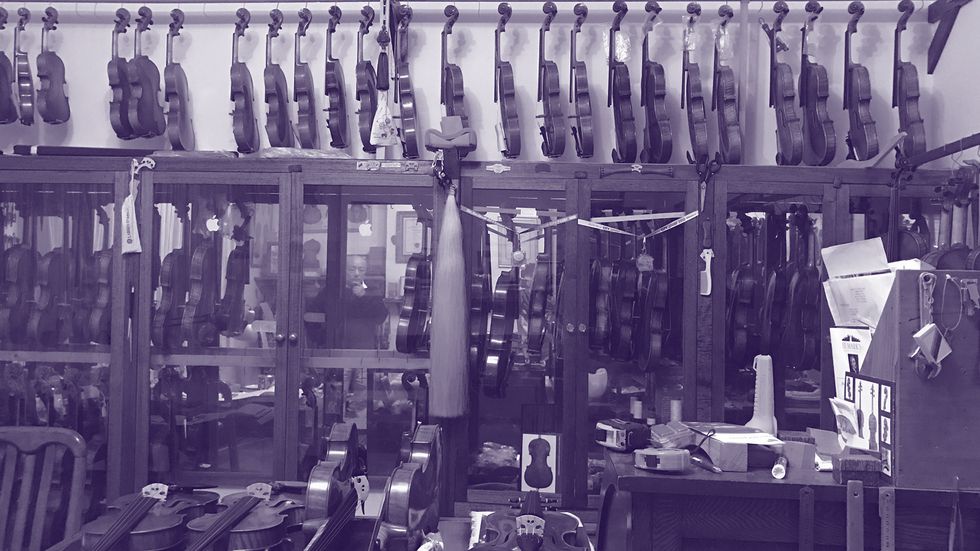
Pressed to speak of the time he was rich in China, Zaixing appeared reluctant but eventually opened up a little. In 1983, after he won the West German competition, the price of his handmade violins was close to 2400 yuan; however, the wage for a luthier in a factory was only 80 yuan per month. Because of his superior craftsmanship in violin, he was elected the shop manager of the Beijing Violin Manufacture School.
He was doing well himself but wanted to improve the conditions of luthiers on the factory floor. This was opposed by the factory leader. The criticism was that he had focussed on increasing the skills of his production workforce but ignored the political struggle and social impact. In doing so, he offended his leaders.
His opportunities were curtailed - he learned by chance many years later that an invitation from an American luthier, asking Zaixing to study and share his knowledge of Chinese violinmaking in the United States was kept from him by his boss - and he eventually resigned his position in 1987.
After resigning, he had time to study his craft and produce his own violins. However, without the factory's support, it was difficult to sell them. His master Hongxiang advised him: "Go out of the country and look around the international market."
His craftsmanship was known in both Europe and the United States but he chose Australia because the visa was one of the fastest to get and at that time, there was no English language test. He arrived in Sydney in 1989 on an international student visa, just as a new wave of Chinese migration to Australia began.
In the 30 years since 1989, Zaixing has seen his own life change with the development of Sydney. "I have seen the growth and development of Sydney, and my surroundings are always changing.
"When I came to Australia, life was very difficult for me because of my [poor] English," said Zaixing. He studied English by day, made violins by night and on weekends, would repair instruments for The Violinery on Sydney's Upper North Shore, to support his family.
"A lot of my friends were asking me why I'm trying so hard to learn English, because they want to earn a lot of money with much working. But I am not like them."
A lake needn't be deep, it has supernatural power so long as there is a dragon in it.
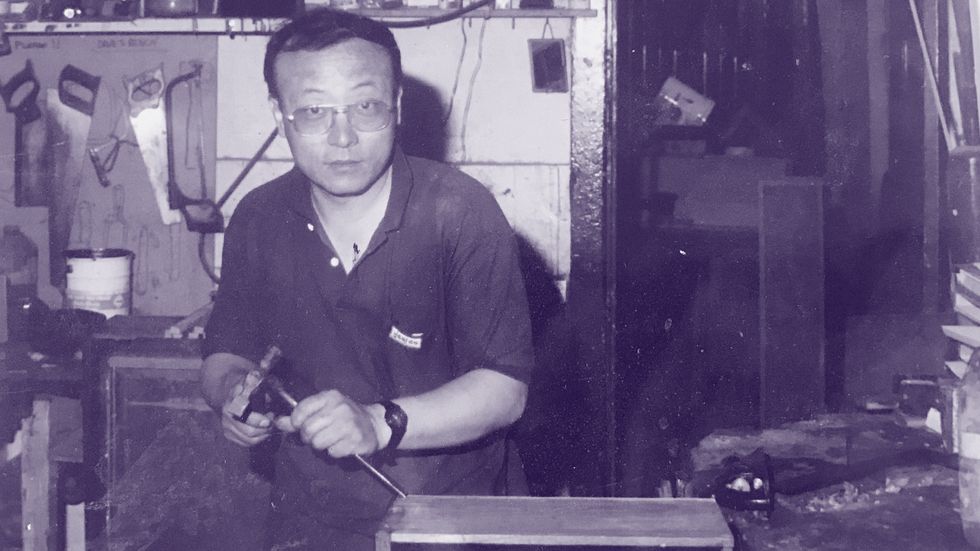
That commitment to improving his English would pay dividends almost immediately. After completing the language course, he found work in a marble factory where he was the only Chinese worker who could communicate in English. Within months, he was promoted to foreman. Within two years, he had moved on to work in furniture restoration, with Eastern Suburbs Antique Restorations, where he worked for 22 years. In 2010, he resigned to start his own luthier's business, Sydney Violins, at the age of 61.
*****
HE LEADS me into a room hung with violins - on the walls and in cabinets. "Some of these are made by me, the rest are my collection," he said. We continue to converse in Mandarin, despite his English, because in our earliest conversations, I had not realised his proficiency.
He points out two framed "certificates of merit for tone" on the wall, "given by The Violin Society of America in my honour". The first was awarded to Zaixing for Viola in 2012 and the second was for Cello in 2014. The awards proved as significant a career breakthrough as his West German prize had done 31 years earlier.
"I remember there were few people in my shop and I only sold 10 violins in three years," he said, of the lean early years in his new business. "At that time, I questioned whether the decision to resign was right or not. But I never gave up. I told myself it is just a short time which I have to experience. So, I still concentrated on my violin production and finally, my violin was awarded and accepted in international competition."
At an international competition in the US, he met Chinese luthiers, many of whom couldn't speak English, and were struggling to understand the professional reviews given by the judges.
"I translated what the judges said into Chinese and helped those luthiers to learn American luthiers' skills and technique. And then, I also spoke with the Americans about our understandings of violin in English."
All thanks to the attention he paid in his English language school, he said.
Turning back into his workplace he took out a box of tools that I had never seen before. Looking up, through his bifocal glasses, he smiled and carefully explained: "This is the small hand plane. This one is called finger plane. And this tool is plane shape holder. These tools have been with me for 30 years, and they still are useful and crucial for my violins."
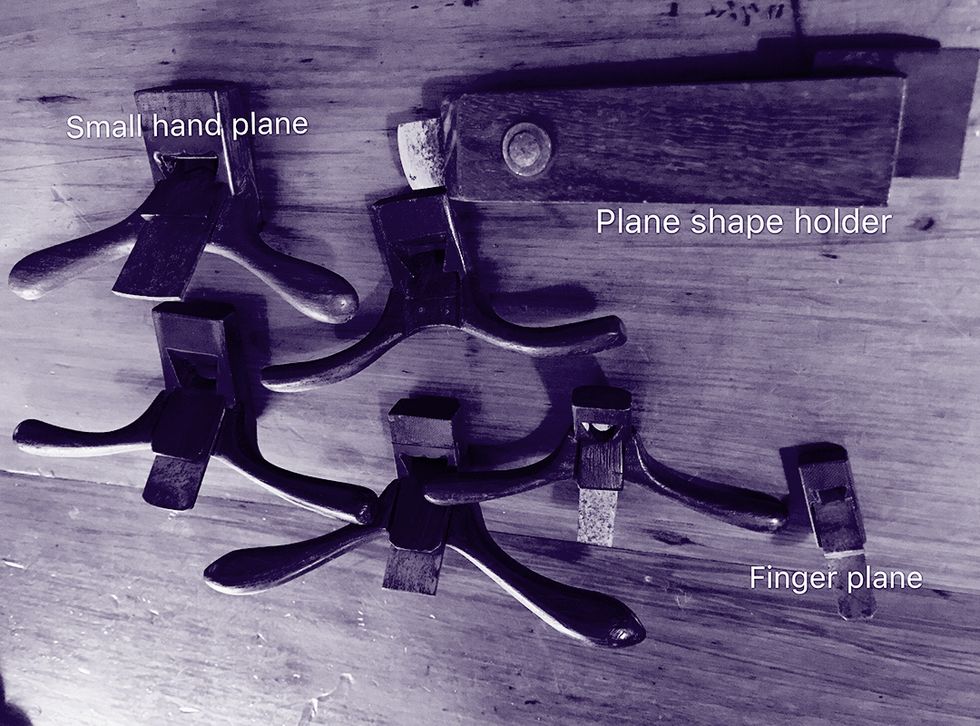
These tools, (which he made himself when he could not source them in his new country), capture the life of Zaixing in Australia, each one a symbol of his Chinese luthier spirit. He has changed in his lifestyle and diet preference but his spirit cannot be changed whatever time or space.
Nine years on, Sydney Violins in Anzac Parade, Kingsford is a thriving business. Prices range from around $10,000 for a basic violin to $35,000 for a professional performance instrument.
His daily schedule includes everything from changing a bowstring, to making structural adjustments to crafting a new made-to-measure violin. "A handmade violin will take 200 hours, not including the time for adjusting. I don't have more energy to do more work, after all, I'm 70-year-old," he added.
He works with concert performers and those just starting out. He recently sold a violin to a talented young girl whose parents could not afford an expensive violin. He sold it for $8,000, although it has taken hundreds of hours' work and was worth more than $13,000.
"I just try my best to help these children, not for reputation or anything," Zaixing said. Although he sees himself primarily as a luthier, he often performs a piece of music on his favourite violin at home at the end of the day. "I never stop performing, because I think it is my soul," said Zaixing.
In the first act of his disjointed career as a world-class luthier, Zaixing created violins for the Wuhan Conservatory of Music. In the second act of his remarkable life story, it is students from Sydney's Conservatorium of Music who come calling.
"The last big process was to make five violins for the Sydney Conservatorium of Music. Their students need pure handmade violins. I am very happy they can find me, and I can give them a lot of help," said Zaixing.
David Carreon, a student at The Con, has played violin for 15 years, and said he is very honoured to become friends with Zaixing. "Based off the Stradivarius design, Zaixing's instrument is able to produce a very resonant sound, both bright and mellow on different strings," he explained. "I am very content with the instrument which I have had for almost a year now."
Outside, darkness has fallen. As I take the bus home, I reflect on the master luthier's seeming philosophy on life, a life lived in two parts. "Life is what happens while you are waiting for something else," he said. "You just need to be yourself and carry on."
Yuchen, 25, has completed his Master in PR & Advertising degree at UNSW. Friends call him Rain because he likes rainy days. Interpersonal communication is crucial to him. A professional e-sport player, he really wants to work in the e-sport industry.


